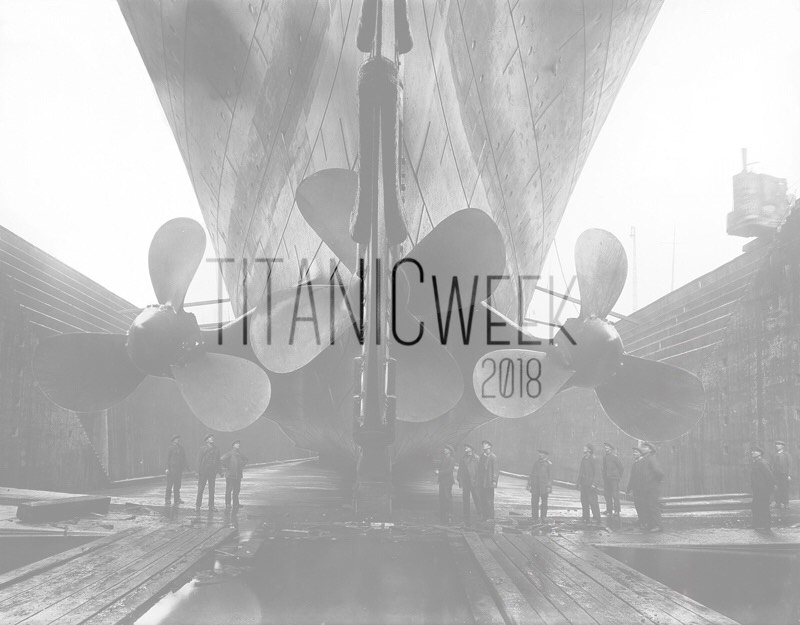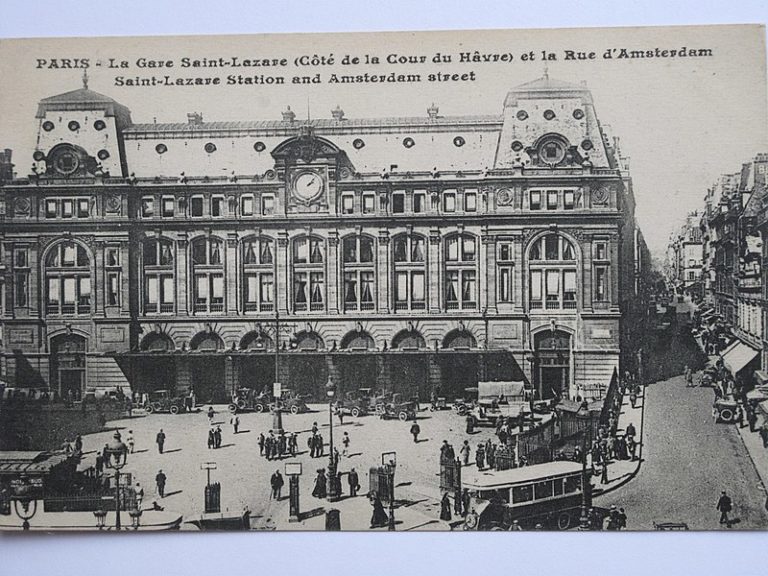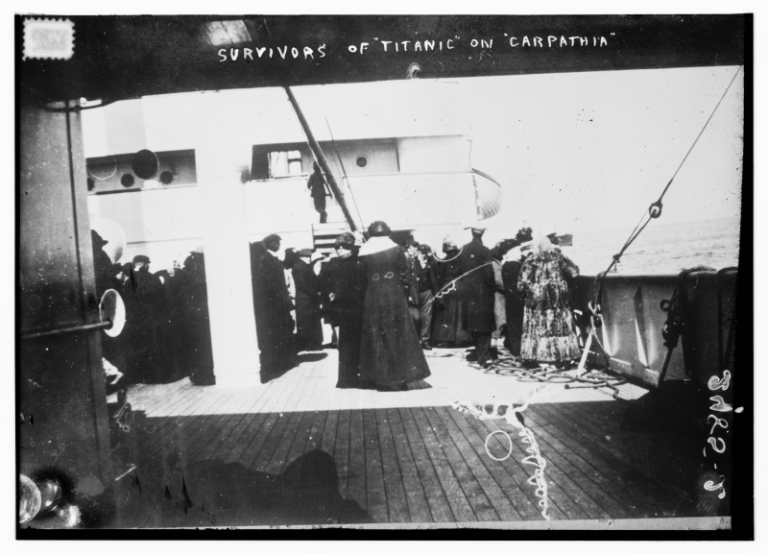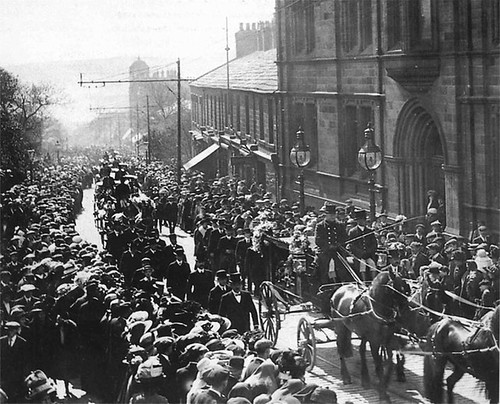"So That We Might All Live Happily Together": Michel Navratil & 'The Titanic Orphans'
Michel Navartil, 32, was a Slovakian tailor who had been living in Nice, France, when he married Marcelle Caretto in 1907. They had two sons, Michel Jr. and Edmond, nicknamed Lolo and Momon by their parents.

Michael Navratil, taken prior to his voyage on Titanic in 1912.
By 1912, Michel's business was struggling, and he suspected Marcelle, 21, of cheating on him, so they separated. Even though the boys, 4 and 2 years old, were in the custody of Marcelle, she let Michel take them for the Easter break.
Thing is, Michel had no intention of returning them.
After a stopover in Monte Carlo, he brought them to England, where he bought three second-class tickets on Titanic. He registered himself as Louis M. Hoffman--the name of a friend who helped him accomplish the abduction--and registered his boys as "Louis" and "Lola". They boarded at Southampton.

Titanic departing Southampton on April 10, 1912. Courtesy of the National Maritime Museum, Greenwich, UK.
When asked, "Mr. Hoffman" told other passengers that he was a widower, and aside from a cardgame during which he let a Swiss girl babysit them, he never let them stray from his side. He wrote back to his mother in Hungary, hoping that his sister and brother-in-law would help take care of the boys if they were not permitted or able to stay in America.
Michel, Jr., had no notion of any wrogdoing on his father's part. He recalled that Titanic was
A magnificent ship! ...I remember looking down the length of the hull... My brother and I played on the forward deck and were thrilled to be there. One morning, my father, my brother, and I were eating eggs in the second-class dining room. The sea was stunning. My feeling was one of total and utter well-being.
On April 14, upon learning of the collision, a still unidentified passenger helped Michel dress the boys and bring them up on deck.
Michel, Jr., said of his father and the stranger carrying them up on deck, "When I think of it now, I am very moved. They knew they were going to die."
The only lifeboats left were the 4 collapsibles, and the only one secure and ready to go was Collapsible D, presided over by Second Officer Charles Lightoller.

Collapsible D, which contained the Navratil boys, as taken from on board Carpathia on April 15, 1912.
Officer Lightoller was gravely serious about the "Women and Children" order. Due to the maddened crush of third-class passengers--most of them men--Lightoller had ordered a locked-arm circle around the lifeboat, so only women and children could board.
Michel passed his little sons through to be minded in the boat.
Even in his later years, Michel, Jr., recalled his father's last words to him.
"My child, when your mother comes for you, as she surely will, tell her that I loved her dearly and still do. Tell her I expected her to follow us, so that we might all live happily together in the peace and freedom of the New World."
We know a little bit about Michel's and Edmond's night in Collapsible D not from Michel's recollections, but from First-Class passenger Hugh Woolner. Hugh and another passenger had taken their chances together and jumped down into Collapsible D when they noticed room in the bow portion of the lifeboat.
Hugh testified in the American Inquiry, and he recalled how distraught young Michel was.
A sailor offered some biscuits, which I was using for feeding a small child who had waked up and was crying. It was one of those little children for whose parents everybody was looking; the larger of those two... I should think it was about 5, as nearly as I can judge... It looked like a French child; but it kept shouting for its doll, and I could not make out what it said before that. It kept saying it over and over again.
Michel Navratil, Sr., did not survive to be reunited with his sons. His body was recovered and listed as follows.
NO. 15 - MALE - ESTIMATED AGE 36 - HAIR & MOUSTACHE, BLACK
CLOTHING - Grey overcoat with green lining; brown suit.
EFFECTS - Pocket book; 1 gold watch and chain; silver sov. purse containing £6; receipt from Thos. Cook & Co. for notes exchanged; ticket; pipe in case; revolver (loaded); coins; keys, etc; bill for Charing Cross Hotel (Room 126, April 1912).
SECOND CLASS NAME - LOUIS M. HOFFMAN.
"Louis" and "Lola" were the only orphaned survivors of Titanic. And like other young children, they were hauled on board in burlap bags.
On board Carpathia, it was realized that they only spoke French. Survivor Margaret Hays was concerned that the brothers would be separated, so she offered to take them under her care in New York City. The boys spent most of their time playing with Lady, Hays' little Pomeranian, which was one of only three dogs to survive the sinking.
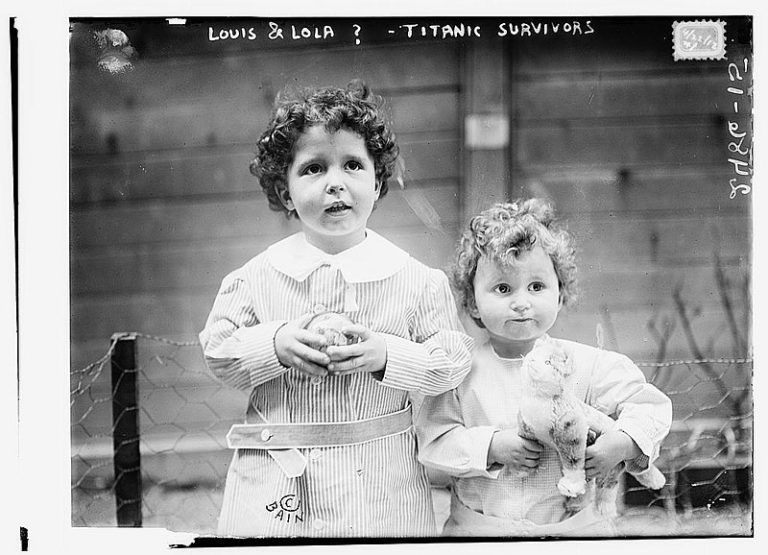
Michel (left) and little Edmond with his toy cat. From the George Grantham Bain Collection, courtesy of Library of Congress.
In New York, the boys were motherless for some time. According to contemporary newspaper articles, they only answered "oui" to inquiries from Consul representatives, and as little children are prone, they were much more interested in playing with their new toy boats.
The following was reported in "No Light on the Mystery Hiding the Identity of Two Waifs of the Sea," an article published in the Evening World dated April 22, 1912.
Under the shadow of a giant azalea they sat yesterday afternoon, each with a brand-new boat in hand with which they entertained themselves while the French Consul to New York strove vainly to extract some enlightening word from the elder boy, whose age has been given as three and a half.
To every question the little curly haired chap replied with a polite and baffling "Oui" and said nothing more.
"Do you like to play with your boat?" asked the Consul, taking the little fello [sic] on his knee.
"Oui," came the monotonous reply.
"What city do you come from?"
"Oui."
"Do you remember the big boat that brought you away from France?"
"Oui."
Yet the children are by no means stupid. They are sweet, well-mannered, gentle little fellows, and my only hope for them is that having survived the perils of the iceberg and the open sea they may not be adopted by some American family which was born with a gold knife in its mouth.
For what it's worth, the author of this particular article also found the gifts of little toy boats a bit untoward, writing, "Probably I am the only person to whom it seemed in the least incongruous that these two babies should be playing with brand new tin boats."

Edmond (left) and Michel with their toys.
Many photos were taken of "Louis" and "Lola" to be circulated worldwide. But in addition to their inability to speak English, the boys had been given fake names by their late father, so tracking down their mother was proving impossible.
When asked if the orphans could be traced via their father's tickets, Margaret Hays' father illustrated the fatal class divide perfectly in his response. "I have never travelled second cabin or steerage," he said, "so I don’t know anything about such matters."
Michel, Jr., recounted coming to the realization that, had they not been in Second Class, he and his brother would surely have died.

Michel (left) and Edmond. Courtesy of the National museum of the U.S. Navy.
Meanwhile, in France, their mother Marcelle was desperately, frantically searching for her sons with no leads. She was entirely unaware that they had even left the country, let alone sailed on the Titanic.
Marcelle knew nothing of the so-called 'Titanic Orphans' until she saw their photos in a newspaper. Marcelle sailed to New York City courtesy of the White Star Line, and was reunited with her boys on May 16, 1912.
Permitted to meet them alone, she found Michel reading an alphabet book on a window seat, and Edmond on the floor, playing with puzzle pieces.
Growing wonder spread over the face of the bigger boy, while the smaller one stared in amazement at the figure in the doorway. He let out one long-drawn and lusty wail and ran blubbering into the outstretched arms of his mother. The mother was trembling with sobs and her eyes were dim with tears as she ran forward and seized both youngsters.
She reportedly was asked if she would talk to them about Titanic, and said, "I do not want them to think about that," she said. "They must only be happy from now on—only happy; no more distress."

Michel and Edmond reunited with their mother. Courtesy of the Library of Congress.
Edmond died in 1953, after having served in the French Army in WWII.
Michel, Jr., accomplished a doctorate in philosophy, and was a professor. He was one of the longest-lived survivors, and the last-living male survivor. He died in 2001, having said throughout his life that since four years old, he had "been a fare-dodger of life. A gleaner of time."
Because of the fake surname he used when boarding, Michel Navratil Sr. was interred in the Halifax cemetery that was designated for Jewish victims. The headstone has since been replaced to reflect his true identity.
